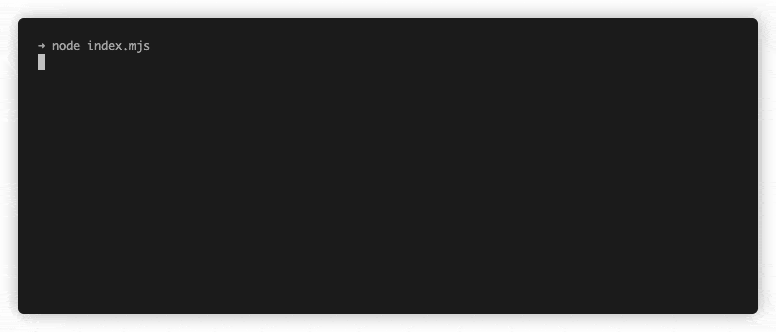Golem JS QuickStart
Introduction
In this article, we'll show you how to run a simple task on the Golem Network.
As a QuickStart, we will perform a simple task: running a basic shell command on a rented provider.
It should take just a few minutes to complete, and you will see the command output printed in your terminal.
This example has been designed to work with the following environments:
- OS X 10.14+, Ubuntu 20.04 or Windows
- Node.js 16.0.0 or above
Installing and running Yagna
Yagna is a service that communicates and performs operations on the Golem Network. Let's get started by installing it.
Install Yagna
On Linux/ MacOS, you can install it using our installation script like this:
curl -sSf https://join.golem.network/as-requestor | bash -
You might be asked to modify your PATH afterward.
Should you encounter any problems, please reach out to us via our Discord channel or consult the following resource for troubleshooting.
Start the Yagna service
Open a terminal (command line window) and define the app-key that will allow our script to use the Yagna API:
export YAGNA_AUTOCONF_APPKEY=try_golem
Then start the yagna service:
yagna service run
Get test GLM tokens
Requesting tasks on the Golem Network requires GLM tokens. As this example will run on a test network, you can use test GLM.
Open another terminal and run the following command to complete the configuration:
yagna payment fund
It will top up your account with test GLM tokens. These tokens can only be used on the testnet.
Building your first Golem Network App
Create a new Node.js project and install the Golem SDK by entering the following commands in your terminal:
mkdir try_golem
cd try_golem
npm init
npm install @golem-sdk/golem-js
Create a file named requestor.mjs and copy the following content into it. The code defines a task that runs the command node -v on the Golem Network and prints the result to your terminal.
import { TaskExecutor } from "@golem-sdk/golem-js";
(async () => {
const executor = await TaskExecutor.create({
package: "529f7fdaf1cf46ce3126eb6bbcd3b213c314fe8fe884914f5d1106d4",
yagnaOptions: { apiKey: "try_golem" },
});
const result = await executor.run(async (ctx) => (await ctx.run("node -v")).stdout);
await executor.end();
console.log("Task result:", result);
})();
You can find a detailed explanation of the above code here
Running the script on Golem Network
Run the command:
node requestor.mjs
The output of the script should look very similar to the one below:

You can find information regarding the node.js version used on the remote computer - v.16.14.0 - at the end of the script's logs. This version is incorporated into the current standard Golem image used to execute the task.
Summary
You've installed the Yagna service and executed a simple task on the Golem Network. However, you can accomplish much more. Here are some suggested next steps to explore the Golem Network world: